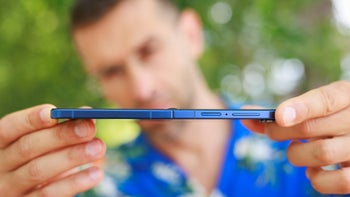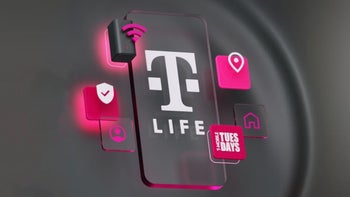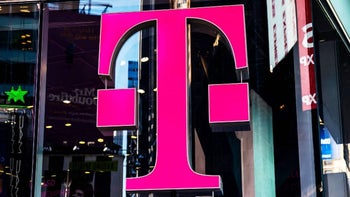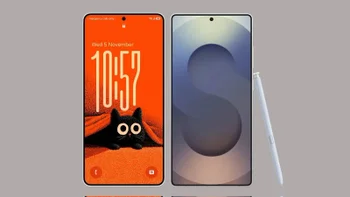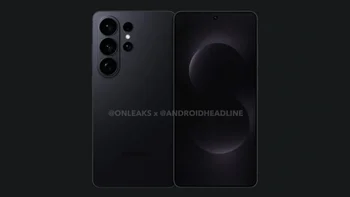- Home
- Samsung Phones
- You are here
Samsung Galaxy S8
Full Specifications
This device is also known as Samsung SM-G950U, Samsung SM-G950F, Samsung SM-G950FD
8.9
I want it
44 users
I have it
63 users
I had it
79 users
Availability |
|
|---|---|
| Officially announced | Mar 29, 2017 |
Design |
|
|---|---|
| Dimensions |
5.86 x 2.68 x 0.31 inches 148.9 x 68.1 x 8.0 mm |
| Weight | 5.47 oz / 155.0 g |
| Materials |
Back: Glass (Corning Gorilla Glass 5) Frame: Aluminum |
| Resistance | Water, Dust; IP68 |
| Biometrics | Iris scanner, 2D Face unlock, Fingerprint (touch) |
| Keys | Left: Volume control, Other; Right: Lock/Unlock key |
| Colors | Midnight black, Orchid gray, Arctic silver, Coral blue, Maple gold, Rose pink, Burgundy red |
Display |
|
|---|---|
| Size | 5.8-inch, 84.26% screen-to-body |
| Type | Super AMOLED, HDR |
| Resolution | 2960x1440px, 18.5:9 ratio, 570 PPI |
| Protection | Corning Gorilla Glass 5 |
| PhoneArena Display Test | |
|---|---|
| Bright Max (20% APL) | Untested |
| Bright Min | 1 (Excellent) |
|
Learn more on our
PhoneArena Display Test Results page.
|
|
Hardware |
|
|---|---|
| System chip | Snapdragon 835 MSM8998 (10 nm) |
| Processor |
Octa-core 2350 MHz Kryo 280 |
| GPU | Adreno 540 |
| Memory | 4GB (LPDDR4)/64GB |
| Storage expansion | microSDXC up to 256 GB |
| OS | Android (9.0 Pie, 8.0 Oreo, 7.0 Nougat) |
| This device has different variants: View all | |
Battery |
|
|---|---|
| Type | 3000 mAh, Li - Ion |
| Charging |
Qualcomm Quick Charge 2.0 Qi and Powermat wireless charging |
Camera |
|
|---|---|
| Rear | Single camera |
| Main camera |
12 MP (OIS, PDAF) Aperture size: F1.7 Focal length: 26 mm Sensor size: 1/2.55" Pixel size: 1.4 μm |
| Flash | LED |
| Video recording |
4K UHD (30 fps), QHD, 1080p (60 fps), 720p (240 fps) HDR, Time-lapse video, Hyperlapse, Continuous autofocus, Object tracking, Picture-taking during video recording, Video light, EIS, Video calling, Video sharing |
| Front |
8 MP (Wide Angle, Autofocus, HDR) Video capture: QHD |
Connectivity & Features |
|
|---|---|
| Bluetooth | 5.0, Yes |
| WLAN |
a,b,g,n,ac,dual-band MIMO, Wi-Fi Direct, Hotspot 802.11 a, b, g, n, ac |
| USB | Type-C, USB 3.1 |
| Sensors | Accelerometer, Gyroscope, Compass, Hall (for flip covers), Barometer, Ambient light sensor, Proximity sensor |
| Hearing aid compatible | M3/T3 |
| Location | GPS, A-GPS, Glonass, Galileo, BeiDou, Cell ID, Wi-Fi positioning |
| Other | NFC, ANT+, UMA (Wi-Fi Calling), Tethering, Computer sync, OTA sync |
Multimedia |
|
|---|---|
| Headphones | 3.5mm jack |
| Speakers | Earpiece, Loudspeaker |
| Features | 32-Bit DAC, aptX-HD |
| Screen mirroring | DLNA,Wireless screen share,MHL |
| Additional microphone(s) | Noise cancellation, Video recording |
Cellular |
|
|---|---|
| LTE Bands | 1, 2, 3, 4, 5, 7, 8, 12, 13, 17, 18, 19, 20, 25, 26, 28, 29, 30, 66 |
| TDD Bands | 38, 39, 40, 41 |
| 3G Bands | 1, 2, 5, 8 |
| Data Speed | LTE-A Pro Cat 16 (1000/150 Mbit/s), HSDPA+ (4G) 42.2 Mbit/s, HSUPA 5.76 Mbit/s, UMTS |
| SIM type | Nano SIM |
| HD Voice | Yes |
| This device has different variants: View all | |
Regulatory Approval |
|
|---|---|
| FCC approval |
Date approved: Apr 06, 2017 FCC ID value: A3LSMG950U |
| Measured SAR |
Head: 0.49 W/kg Body: 0.48 W/kg Simultaneous Transmission: 1.53 W/kg Wireless Router: 0.46 W/kg |
| This device has different variants: View all | |
Alternative variants
International version
| Differences from the main variant: | |
|---|---|
| System chip | Samsung Exynos 9 Octa 8895 (10 nm) |
| Processor |
Octa-core 2300 MHz Exynos M2 "Mongoose" and ARM Cortex-A53 |
| GPU | Mali-G71 MP20 |
| LTE Bands | 1, 2, 3, 4, 5, 7, 8, 12, 13, 17, 18, 19, 20, 25, 26, 28, 32, 66 |
| TDD Bands | 38, 39, 40, 41 |
| FCC approval |
Date approved: Sep 05, 2017 FCC ID value: A3LSMG950F |
| Measured SAR |
Head: 0.38 W/kg Body: 0.75 W/kg Simultaneous Transmission: 1.55 W/kg Wireless Router: 1.09 W/kg |
for T-Mobile
| Differences from the main variant: | |
|---|---|
| LTE Bands | 2, 4, 5, 12 |
| 3G Bands | 5, 4, 2, 1 |
| VoLTE | Yes |
for Verizon Wireless
| Differences from the main variant: | |
|---|---|
| LTE Bands | 2, 3, 4, 5, 7, 8, 13, 18, 19, 20, 26, 28 |
| TDD Bands | 38, 39, 40, 41 |
| 3G Bands | 5, 8, 2, 1 |
for U.S. Cellular
| Differences from the main variant: | |
|---|---|
| LTE Bands | 2, 4, 5, 8, 12, 13, 17, 18, 19, 25 |
| TDD Bands | 38, 39, 40 |
| Data Speed | LTE-A, HSPA, UMTS |
with Dual SIM
| Differences from the main variant: | |
|---|---|
| System chip | Samsung Exynos 9 Octa 8895 (10 nm) |
| Processor |
Octa-core 2500 MHz Exynos M2 "Mongoose"and ARM Cortex-A53 |
| GPU | Mali-G71 MP20 |
| Dual SIM | Yes |
Despite our efforts to provide full and correct Samsung Galaxy S8 specifications, there is always a possibility of admitting a mistake. If you see any wrong or incomplete data, please
If you are interested in using our specs commercially, check out our Phone specs database licensing page.
Overall User Rating
8.9
1 person recommends this phone.
Build quality
8.8
Camera quality
9.1
Performance
8.6
Display
9.5
Battery life and charging
7.7
Value for money
8
Related News
Two older Galaxy S series receive surprising firmware update
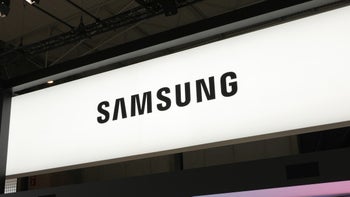
The Samsung Galaxy S7 series, and Samsung Galaxy S8 series, released in 2016 and 2017 respectively, both lost support from Samsung four years after being released. For the Galaxy S7 and Galaxy S7 Edge, the loss of support took place in 2020, and it h...

Samsung surprises Galaxy S8 owners with an unexpected software update
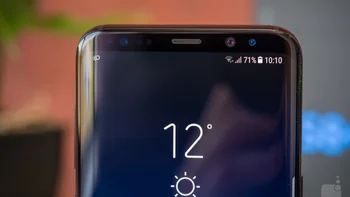
Even though the support cycle of the Galaxy S8 and Galaxy S8+ ended a long time ago, earlier today Samsung surprised some Galaxy S8 owners with an unexpected update. The Korean company issued a security patch to its 5-year-old smartphone models back ...

April security patch finally reaches Galaxy S8, Galaxy S8+, Galaxy Z Flip
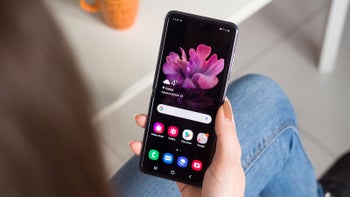
We're halfway through April, and Samsung hasn't finished rolling out this month's security update to all of its devices yet. It's already brought awesome camera improvements to the Galaxy S21 series, and the Galaxy Z Fold 2 and Note 10 and Note 20 Ul...

Samsung Galaxy S8 and Note 8 won't be upgraded to Android 10
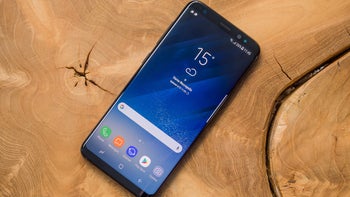
Despite the fact that Samsung's support reps said numerous times in the past that the Galaxy S8 and/or Note 8 will be updated to Android 10, the South Korean company finally confirmed that these two flagships won't receive any new OS updates beyond A...

Discover More
- Samsung Galaxy S8 Review
- Samsung Galaxy S9 and S9+ vs Galaxy S8 and S8+
- OnePlus 5T vs Samsung Galaxy S8 and S8+
- Apple iPhone 8 vs Samsung Galaxy S8
- Samsung Galaxy S8 vs OnePlus 3T
- Samsung DeX review: the Galaxy S8 probably won't replace your desktop PC
- Samsung Galaxy S8 vs LG G6
- Samsung Galaxy S8 vs Google Pixel
- Samsung Galaxy S8 vs Galaxy S7
- Samsung Galaxy S8 vs Apple iPhone 7

